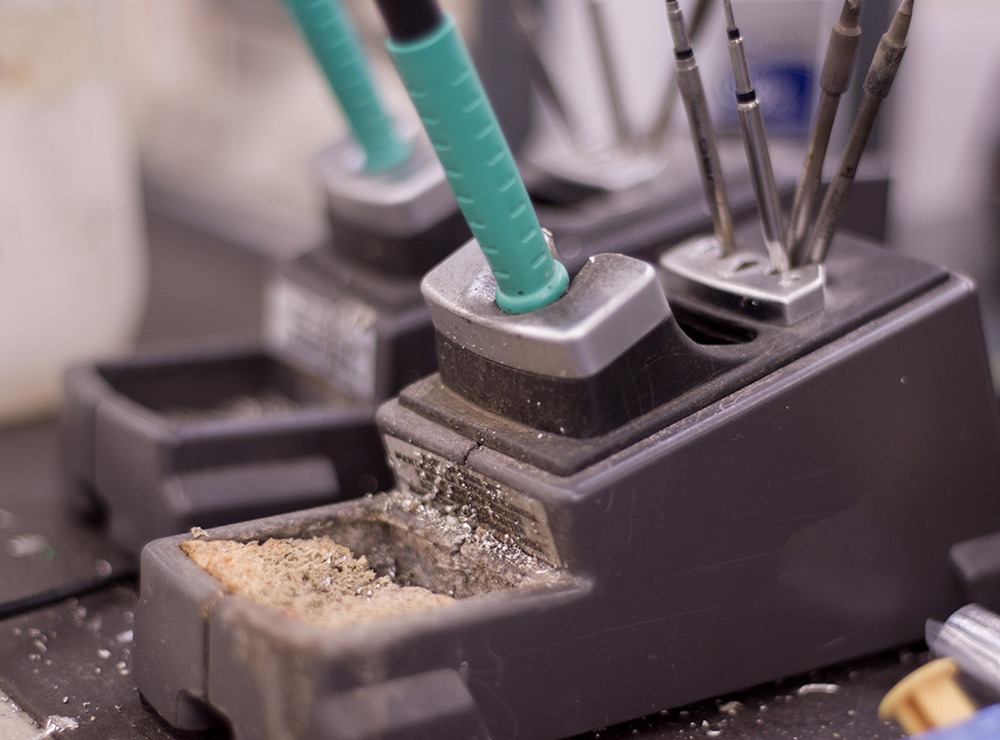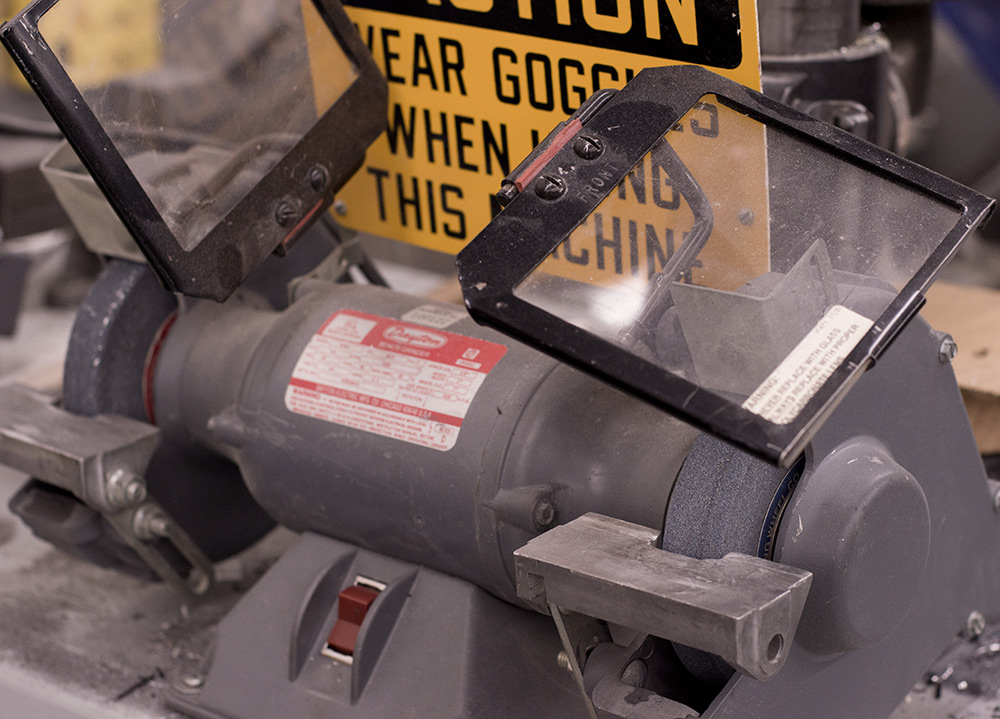4 MIN. READ

In more recent times, printed circuit boards (PCBs) are often repaired rather than replaced due to the lower expense. Medical imaging devices, for example, along with office equipment and manufacturing robotics can cost hundreds of thousands of dollars to replace. Repairing the equipment is often the preferred solution.
Not just anyone can set up a PCB repair shop and a great deal of technical knowledge is required. An important consideration is setting a high standard for safety measures that must be put in place to protect technicians from the workplace hazards associated with PCB testing and repair.
Chemical hazards in PCB repair
Hazardous chemicals are involved in the manufacture of PCBs. If a repair shop etches and manufactures replacement boards its technicians are at risk of exposure to toxic photochemicals, acids and heavy metals in the process.
In fact, even if a repair shop does not etch new boards and only repairs existing circuit boards, workers are still at risk of being exposed to toxic residues, fumes and vapors. Lead solder is still a part of most PCBs and when the solder is melted for the replacement of components or the repair of a connection, vaporized lead, cadmium and copper are released. These heavy metals can accumulate in the human body causing long-term damage to the health of the technicians working in a PCB repair shop.
It does not stop there — the flame retardants that are utilized to treat PCBs can be hazardous. Handling heated PCBs or breathing in their vicinity can lead to the absorption of chemicals such as BPA, TBBPA, Fyrol PMP and DOPO into the body. Chemicals such as these are classified as neurotoxins and carcinogens by the US Environmental Protection Agency.
Electrical and mechanical hazards in PCB repair
Chemicals are not the only hazards that technicians face in the workplace. In a PCB repair shop, there are electrical and mechanical hazards to be overcome.
When troubleshooting damaged or faulty PCBs, electrical testing equipment is utilized to identify any bad components, defective connections and broken or bridged circuits. As with anything electrical, this equipment poses a risk of electrocution of the technicians. If a malfunction were to occur, this testing equipment risks causing electrical burns and fires.
In addition to the electrical hazards, a PCB repair shop can contain many mechanical hazards for workers. The tools for cutting and drilling, for instance, pose a risk of serious injury for the technicians. Hot solder can splatter, resulting in burns to the skin and eye injuries.
Best practices for safety in the PCB repair shop
Setting up a safe repair shop starts with meeting the Occupational Safety and Health Administration (OSHA) standards for lead exposure. These standards require you to:
- Conduct all soldering operations under enclosed exhaust hoods.
- Monitor the lead content in the air.
- Clean surfaces with wipes that are designed for heavy metals.
- Utilize high-efficiency particulate air (HEPA) filters to avoid blowing heavy metal dust into the air.
Beyond these basics, chemical hazards in the workplace can be reduced by identifying job tasks that involve exposure to chemical vapors and requiring workers to wear a respirator for such tasks. The absorption of chemicals through the skin can be reduced by requiring workers who handle the PCBs to wear gloves. Make sure that hazardous chemicals are stored properly and disposed of according to EPA guidelines.

The electrical risks in the workplace can be minimized by disconnecting all power sources and discharging all capacitors before the work begins. Moreover, testing equipment should be inspected regularly for any damage to its leads, connectors or fuses, and replaced or repaired in the event of any damage. Testing equipment procedures such as these should follow all safety warnings issued by the manufacturers.
Mechanical risks in the workplace can be reduced by requiring workers to wear safety glasses and proper clothing when operating machinery. The machinery itself should be inspected regularly for wear and tear and should under no circumstances be modified with the removal of safety guards.
Finally, make sure all workers are aware of the safety procedures and what to do in the event of an injury to themselves or a coworker.
Prioritizing workers’ safety in the PCB repair shop will pay off
Securing the safety of workers ensures the profitability of a PCB repair shop:
- Compliance with safety regulations avoids the risk of an OSHA fine
- Fewer worker injuries reduce the insurance premiums that the business faces
- Fewer workplace accidents reduce the time required for accident investigations
Best practices concerning the safety of the workers benefit everyone involved, from the owner of the repair shop to the technician workforce.
Huntron’s testing equipment meets ETL and CE safety standards and can help you build a safe and effective PCB repair shop. Contact us today to discuss your business’ PCB testing needs.
Meta Title:
PCB repair shop safety best practices
Meta Description:
PCB repair shops can be dangerous due to exposure to chemical, electrical, and mechanical hazards. Learn how to develop PCB repair shop safety best practices.
Meta Keywords:
PCB repair, safety

